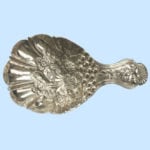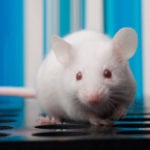 Mysteries
Mysteries  Mysteries
Mysteries  History
History 10 Surprising Stories About the Texas Rangers
 Humans
Humans 10 Philosophers Who Were Driven Mad by Their Own Theories
 Miscellaneous
Miscellaneous 10 Video-Game-Worthy Weapons and Armors from History
 Weird Stuff
Weird Stuff 10 Psychics Who Accurately Predicted Wartime Events
 The Arts
The Arts 10 Pieces of Art Inspired by a Broken Heart
 Health
Health 10 Science Fiction-Sounding New Medical Treatments
 History
History 10 Surprising Facts About the Father of Submarine Warfare
 Space
Space Ten Astonishing New Insights into Alien Worlds
 Weird Stuff
Weird Stuff 10 Bizarre Summer Solstice Rituals Still Practiced Today
 Mysteries
Mysteries Top 10 Haunting Facts About the Ghost Ship MV Alta
 History
History 10 Surprising Stories About the Texas Rangers
 Humans
Humans 10 Philosophers Who Were Driven Mad by Their Own Theories
Who's Behind Listverse?

Jamie Frater
Head Editor
Jamie founded Listverse due to an insatiable desire to share fascinating, obscure, and bizarre facts. He has been a guest speaker on numerous national radio and television stations and is a five time published author.
More About Us Miscellaneous
Miscellaneous 10 Video-Game-Worthy Weapons and Armors from History
 Weird Stuff
Weird Stuff 10 Psychics Who Accurately Predicted Wartime Events
 The Arts
The Arts 10 Pieces of Art Inspired by a Broken Heart
 Health
Health 10 Science Fiction-Sounding New Medical Treatments
 History
History 10 Surprising Facts About the Father of Submarine Warfare
 Space
Space Ten Astonishing New Insights into Alien Worlds
 Weird Stuff
Weird Stuff 10 Bizarre Summer Solstice Rituals Still Practiced Today
10 Incredibly Ingenious Uses For Human And Animal Feces
We eat, and then our body breaks down what we ate, absorbs wanted nutrients, and gets rid of the unwanted residue as sweat, urine, and feces. It’s no big deal, and it’s part of what makes us . . . us. Feces is known by several names around the world, and most of us don’t even care about what it looks like, but there are a lot of others who care about more than that.
You might be disgusted by what you are about to read.
10 Traditional Medicine

A very long time ago, our ancestors depended solely on traditional remedies to cure their ills. They used plants, animals, magic, and a lot of different minerals. Even today, a lot of people still use a wide range of traditional medicine.
In China, tiger parts and products are some of the most important ingredients in traditional medicine. Tiger feces have been used to treat boils, hemorrhoids, and alcoholism. Human feces aren’t left out, either, as they are used together with the licorice plant to make traditional medicine.
About 80 percent of Africans also employ traditional medicine for their health care. A lot of animal feces are applied for such treatments, including that of elephants, palm squirrels, chimpanzees, mongooses, civet cats, and cane rats. These animals’ feces are used for a lot of problems, such as gonorrhea, keloids, barrenness, and miscarriages as well as for spiritual strength and powers.
9 Modern Medicine
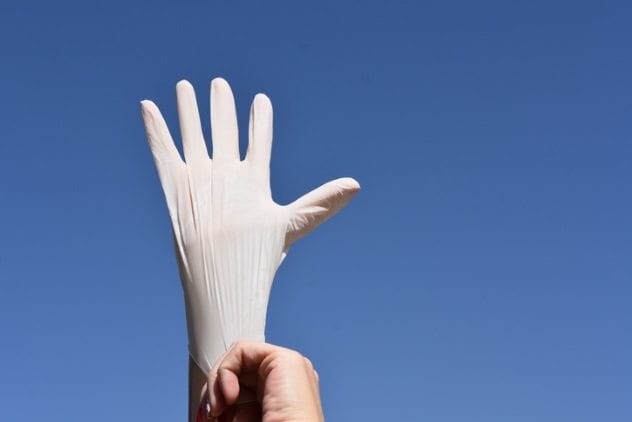
Certain modern treatments involve human feces as well. Infection by a nasty bacterium called Clostridium difficile might call for some. These bacteria call our guts home, along with other, good bacteria which keeps the bad ones dormant. However, old age and long-term use of antibiotics can reduce the number of these good bacteria, allowing C. difficile to become a dominant force in the intestines and turn our lives into a living Hell. Such an infection can cause severe diarrhea (about 15 times a day), fever, blood in the stool, and other horrifying things.
A way to get rid of these nasty bacteria is to repopulate the gut of the infected person with the good bacteria, and a sure way to do that is to use the feces of a healthy person. The tricky part is getting the needed fecal matter into the gut.
Several methods are employed to deliver the fecal matter to a patient’s gut. It might be achieved by the use of colonoscopy, endoscopy, sigmoidoscopy, or enema. All these methods involve using some form of a tube to deliver the feces through the patient’s anus and rectum. You can even do this at home without going to a doctor, but you would need someone who has the guts to handle the dirty work. Nasogastric tube administration can also be employed, in which the fecal matter is shot in through the nose. The most comfortable method for many would be taking a pill made from frozen fecal matter.
In all these mentioned methods of administration, the donor has to be tested for HIV, hepatitis B and C, and other transferable diseases. The feces are then treated with saline and strained to remove large particles. The remaining slurry is what is used for these treatments.
8 Gold Mining
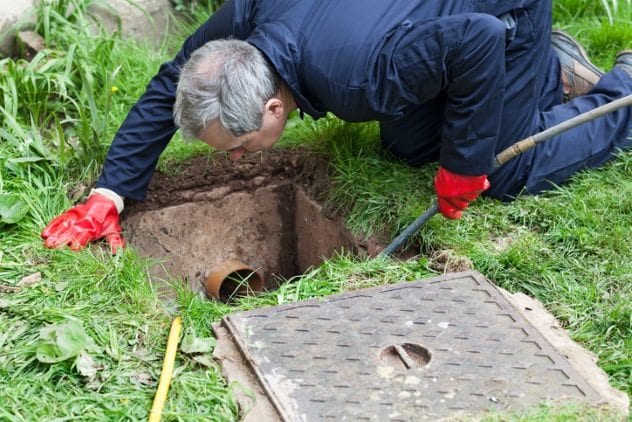
We humans love gold, and we’re always looking for sites to mine this precious metal. One unlikely source of gold is—wait for it—our very own guts, according to a team of researchers from the American Chemical Society. They have found out that our feces can be a very good source of gold, along with other precious metals, such as vanadium, silver, and copper, which are used in most electronics.
Dr. Kathleen Smith, the lead researcher, said that the amount of gold we excrete in our feces reaches the minimum mineral deposit, which means that it can be commercially mined for profits. It has been calculated that the waste material from one million Americans could contain as much as $13 million worth of metals. That gold isn’t in our body just for the sake of being there. It plays an important part in the health and maintenance of our joints and in the transmission of electrical signals in our body.
Japan has been benefiting immensely from sewage mining since 2009. In that regard, a sewage treatment facility in central Japan recorded a higher gold yield than the Hishikari mine, which is one of the world’s top gold mines.
Always think about the cool cash waiting in your sewers whenever you’re in the restroom.
7 The Commodity Poop
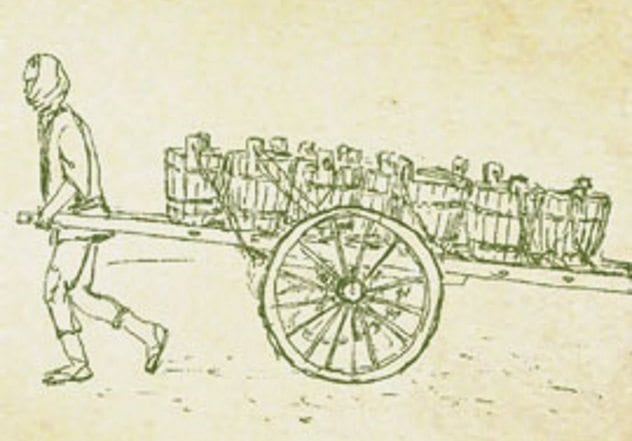
There is always the issue of human excrement, along with other wastes, polluting water even in the so-called developed nations, whereas developing countries, especially in Africa, South America, and Asia, are safe havens for such wastes. But as far back as the 17th century, there was a place where human excrement was never a problem. In fact, it was welcomed. That place was Edo (modern-day Tokyo), Japan. This was during the Tokugawa Shogunate (1603–1867), where any form of international trade between Japan and other countries was forbidden, thereby making Japan somewhat isolated.
As a result of the isolation, Japan became a self-sufficient economy in which recycling was very important. Almost anything could be recycled, and human feces weren’t left out. The fancy name “night soil” was given to the feces because the dedicated feces collectors preferred to work in the night.
A perfect recycling process was created for the night soil. It was collected from people’s homes and public toilets and taken to farmers, who were always ready to buy with either money or crop. The farmers would then use it on their farmlands as fertilizer to grow crops. The crops were eaten by people, who in turn produced more night soil, and the cycle was repeated all over again. This ensured that no waste was discarded into rivers or bodies of water, so water pollution was never a problem.
Many people became self-sufficient with the night soil business. The importance of the night soil was such that landlords and tenants often fought each other over the ownership of such a valuable commodity.
6 Sexual Fetish

As we are higher animals, we don’t just have sex to reproduce like lower animals do. We always try to make our sexual encounters more interesting. In come fetishes. Every one of us might have a thing or two that normally turns us on. Mild fetishes are considered normal by psychologists. However, some fetishes may be bizarre and sometimes outright disturbing to the average person.
People may be sexually aroused by a lot of things, like navels, tickling, feet, bees, cold, and even the thought of hellfire, and some are sexually aroused by feces. This is termed “coprophilia” and explained as “a sexuoerotic pleasure from touching, looking at, or eating feces.” Adolf Hitler was reportedly a coprophiliac.
Some fancy names have been given to various sexual acts with feces, which kind of cover up the fact that the acts are carried out using that brownish waste matter that we excrete. These names include “ATM,” “dirty Rodriguez,” “Cleveland streamer,” “dirty Sanchez,” and many others.
5 Archaeological Research

One of the techniques used in archaeology to connect our past with our present is to study the fossilized feces of our ancestors. As always, a fancy name is adopted for the feces, and in this case, it’s “coprolite.”
The founding and development of coprolite analysis is credited to Dr. Eric Callen. He was a botanist before his research led him to study feces from the past. From there, he made a career switch to archaeology and studied coprolites exclusively. People weren’t always fond of his techniques, but he didn’t mind and continued his work regardless. He died in 1970 while on a field trip in Peru, doing what he did best—studying ancestral feces.
Coprolites are studied by extracting DNA samples from the coprolite after softening it using a special solution. Unfortunately, this also brings back its fresh, stinking smell. A lot of information can be gathered from the extracted DNA samples. This includes information about our ancestors’ diet, health, and even gender. The information gleaned from coprolite analysis can to some extent indicate how ancient communities lived. The technique can also be used to learn more about extinct animals as well.
Who knows, future generations might be digging through our toilets, hoping to know more about us.
4 Solving Crimes
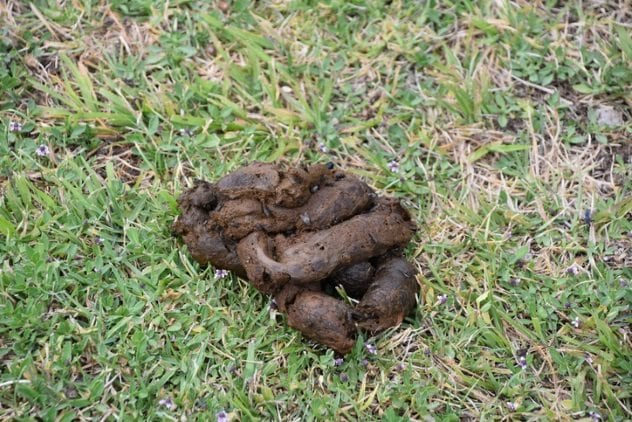
There are at least two reported cases where dog feces were used in a court as evidence, which led to the conviction of the perpetrators.
The first was the case of Phillip Stroud, a case of a burglary that turned into murder. Stroud and three accomplices were seen by workers trying to rob a house in Lakeville, Indiana. But instead of doing what any sane burglar would do and beat it, Stroud promoted himself from burglar to murderer. On his orders, the workers were tied up. Stroud then executed them.
Unfortunately for Stroud, he wasn’t looking where he was going, and he ended up stepping in dog feces at the crime scene. His Nike shoes were later retrieved, and the feces, along with other debris from underneath his shoes, were found to be the same as the feces and debris at the crime scene. Later in court, testimonies from Stroud’s accomplices together with the dog feces were enough to put Stroud behind bars.
The second case was that of Rufus Sito Nanez III, who attacked and raped a 27-year-old woman in her home in Texas. The two had a struggle in the yard, where her pet dog’s feces were patiently lying in wait for the offender. The feces managed to get on Nanez’s shirt, along with the dog’s saliva. These were later collected as evidence, and as you might have guessed already, they were linked to the feces in the woman’s yard. Nunez claimed innocence, but he was convicted and ultimately sentenced to three life terms, due to his prior criminal record.
The next time you’re out to commit a crime, please be mindful of your surroundings. We don’t want to lose any readers to feces.
3 Food And Drink

Now this is one nasty entry. The term “coprophagy” is used to describe the eating of feces or dung, and a lot of animals are guilty of practicing such. These animals have their reasons. In most cases, babies eat the dung of their mothers.
Baby horses eat their mother’s feces to improve their digestive and immune systems, and baby koalas do so to obtain microbes to digest toxins in their food. Hippopotamus babies also eat their mother’s feces (and sometimes that of elephants) to improve their microbial gut flora. Our beloved pets practice coprophagy, too. Mother cats and dogs eat the feces of their litter to hide their scent while the babies are still vulnerable and hidden away. They can eat feces for a lot of other reasons as well.
Rabbits, on the other hand, practice cecotrophy. This is slightly different from coprophagia, as they consume their own feces. Rabbits have two sets of feces: soft and hard. The soft feces are small fiber particles, which are fermented in the cecum to synthesize proteins and vitamins. The rabbits then consume this directly from the anus in the early morning hours. It sounds gross, but it is very nutritious, as it can provide up to 20 percent of their daily protein requirements.
Coprophagy isn’t limited to animals alone, as humans also practice it. However, most cases involve individuals with developmental disabilities and other problems. But still, healthy humans can consume feces either as part of a sexual fetish or as a beverage.
Two popular coffees are made using animal feces. Kopi Luwak is made from civet cat feces, and Black Ivory is made from elephant feces. These coffees are among the most expensive coffees in the world, and they follow virtually the same production process. In both cases, the animal is fed coffee beans. The animal’s digestive enzymes act on the beans and change their protein structure. After some hours, the animals excrete their feces, including these changed beans. The coffee beans are then picked from the feces and prepared for sale.
Another use for Black Ivory coffee beans is to be brewed into a beer, as is done in Japan. The brewery that first produced this beer managed to sell out almost immediately after the beer was launched.
2 Weaponization

People use all sorts of different items to try to hurt or kill each other, with varying levels of success. One such thing is human or animal feces. Feces have been used as a weapon both in the past and the present.
According to the Greek historian Herodotus, Scythians mixed human feces, human blood, and the decomposed bodies of several venomous adders in a vessel. The vessel was then sealed and buried until the mixture was sufficiently putrefied. The vessel was then dug up, and the mixture was smeared on the tips of arrows to be used in battle.
During the Vietnam War, the Viet Cong also used feces for more damage when employing their most popular booby trap: punji sticks. These were sharpened lengths of bamboo or metal with needle-like tips that had been hardened by fire. The sticks were coated with feces, sometimes with poison added, to cause infection. The punji sticks were very effective in crippling enemy forces.
But the use of feces as a weapon is not restricted to the tips of pointy items only. In 2009, Russian inventor Aleksandr Georgievich Semenov patented a weapon system that would allow soldiers inside an armored tank to literally shoot their feces at enemies. It enables soldiers in battle to defecate into an empty shell, into which explosives are then added. The shell can then be targeted at enemy combatants. Two things are achieved with this weapon of waste destruction: getting rid of the stinking feces and/or transferring that stink to your enemy. That has got to hurt physically and mentally.
Away from the battlefield, people still use feces to hurt others. Two women were arrested for injecting feces into the IVs of their victims. The first woman was caught in Arizona doing so to her husband and was charged with attempted first-degree murder. The second was caught in Cincinnati, injecting feces into the IV of her nine-year-old son to spike his fever.
The next time you want to hurt someone, know that the perfect weapon might just be available in your gut.
1 NASA’s Obsession
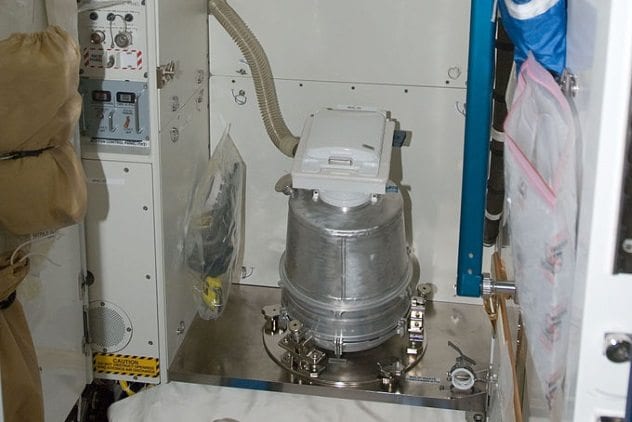
We think it’s safe to say that NASA is a little bit obsessed with human feces because they want to use it fuel, as food, and as a radiation shield. Given that astronauts in space have few useful resources, they do need to be creative with what little they have, so NASA’s obsession is understandable. Furthermore, astronaut feces in space are normally packed and hauled toward Earth to be incinerated during reentry. So it’s only logical that NASA wants to find a use for this waste.
One idea is for the feces of astronauts on the Moon to be taken and converted into rocket fuel for the return trip to Earth. This would save a lot of money and reduce the weight of the rockets leaving Earth. The conversion process can also produce oxygen for the astronauts to breathe.
The process of recycling astronauts’ urine into drinking water has been in use for a while, so converting feces to food should just be an upgrade. NASA paid a $200,000 grant to researchers at Clemson University in South Carolina to find a way to recycle human feces into a synthetic food. This “food” will be used by astronauts on extended journeys or on a Martian colony. With this plan in place, no astronaut needs to worry about food or water shortages.
As for radiation, NASA’s plan is to collect the feces in bags, along with food and water. All of them will then be stored around the walls of the spacecraft. This would provide protection against radiation on deep space journeys.
Conversion of human and animal wastes into biofuel isn’t the sole province of NASA, either. In 2014, Hyundai unveiled a car that runs on biogas converted from human feces. And in 2015, a public bus running on biogas converted from cow dung achieved a record high speed of 124 kilometers per hour (77 mph) in the UK.
Creativity at its best.
Just a regular Joe in love with writing, making money, and Real Madrid.
